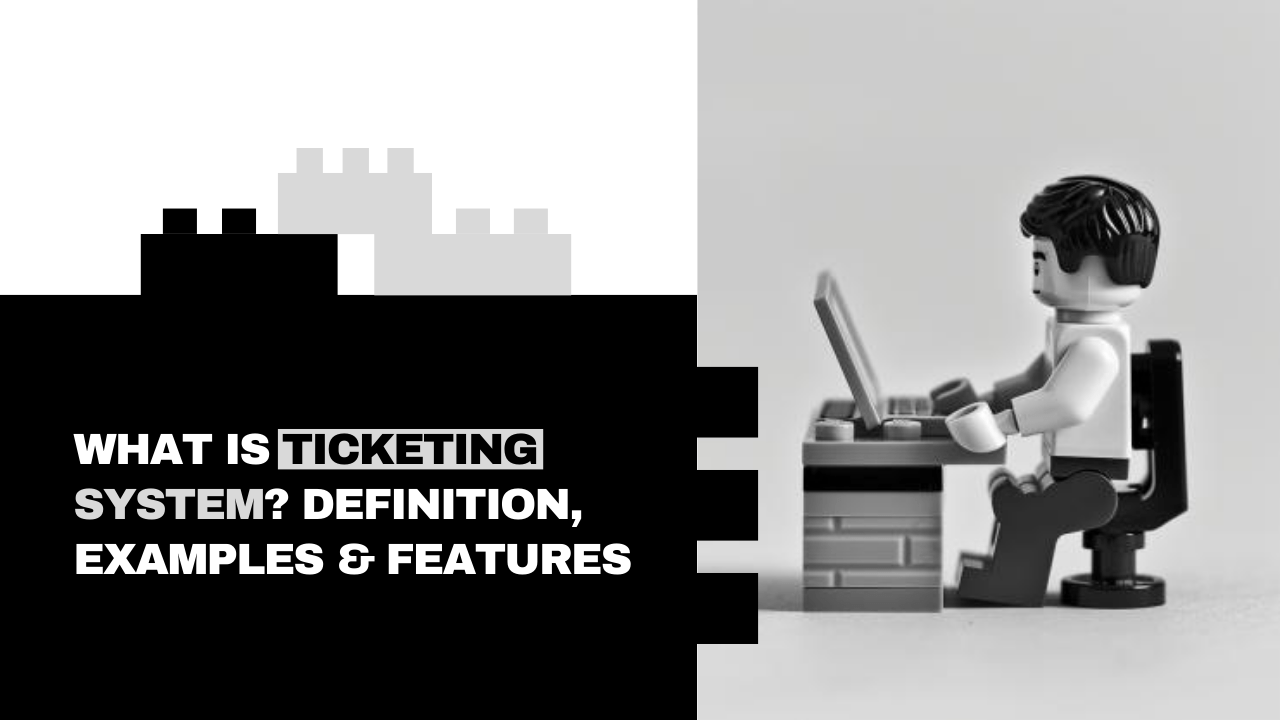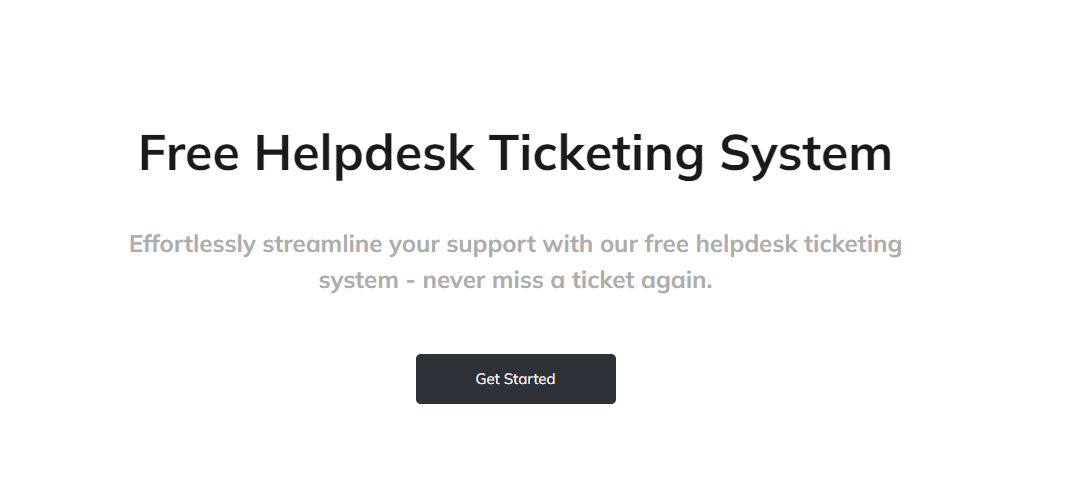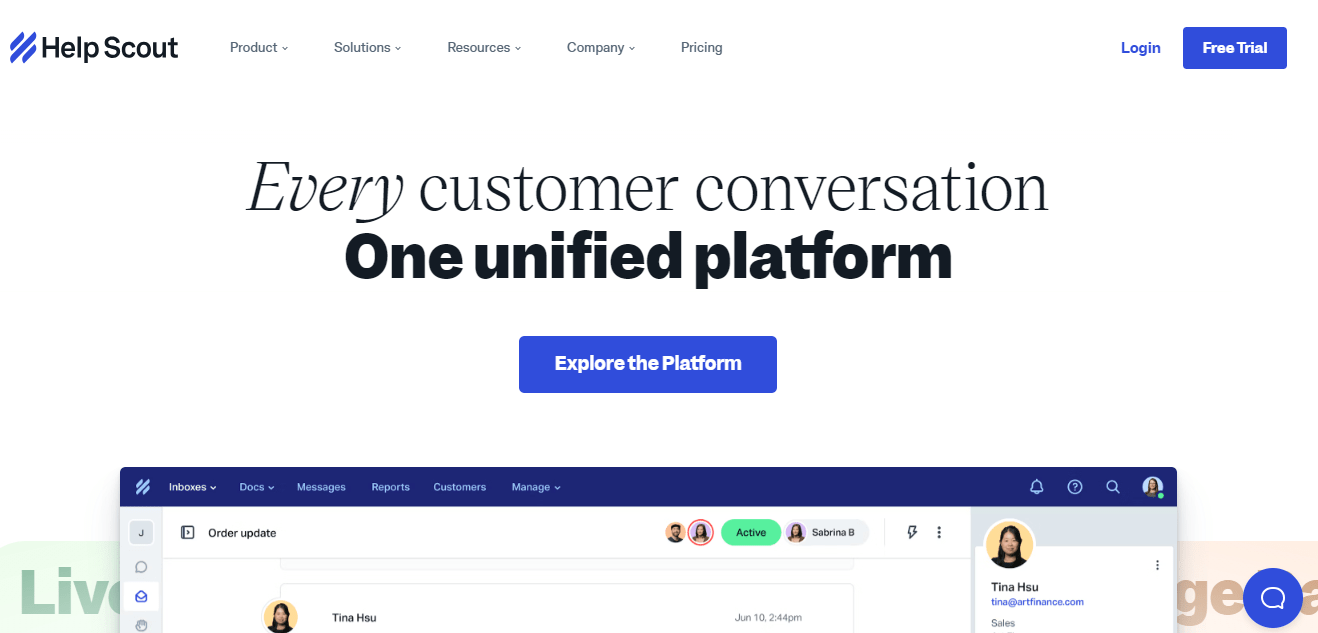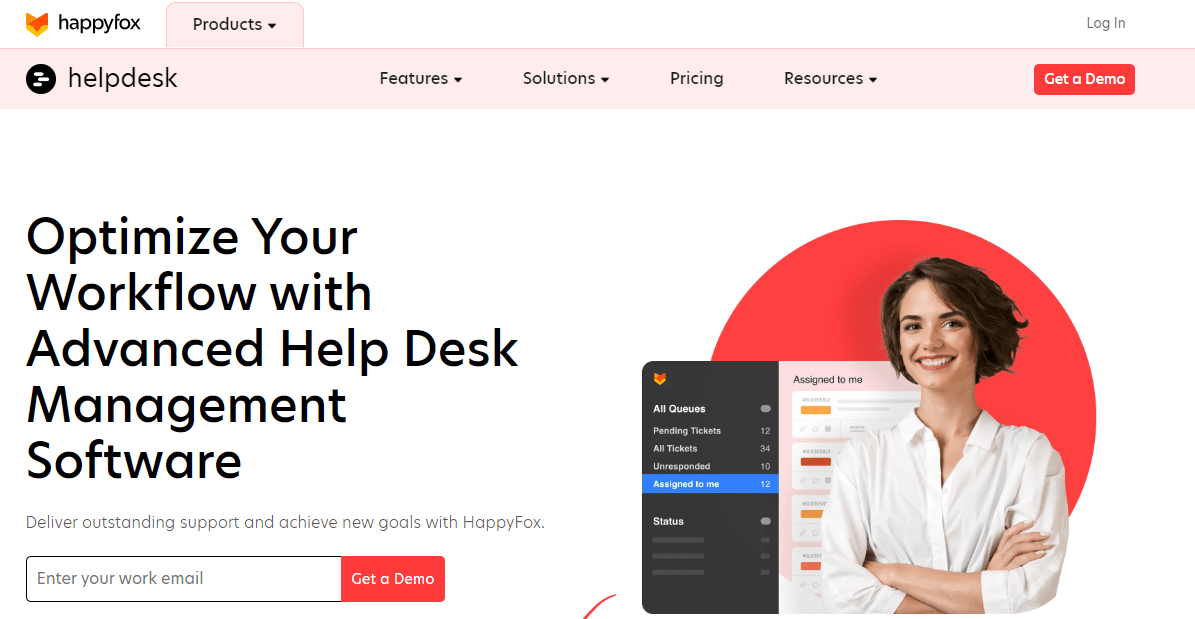

Suppose you just bought a new fitness tracker, all excited to conquer your health goals. But then, disaster strikes. The syncing won't work, and your motivational messages are stuck in cyberspace. Now you're lost in a maze of menus on the company's website, desperately searching for a way to contact support.
Sound familiar? We've all been there, tangled in the web of customer service requests. But what if there was a better way? A system that streamlines communication, resolves issues faster, and leaves you feeling like a valued customer, not a lost cause?
Enter the ticketing system. Whether it's a small hiccup with your software or a major technical challenge, the right ticketing system can transform the way companies handle customer and internal support requests
In this blog we will explore ticketing system and how ticketing systems can transform your experience (and the experience of countless other customers).
What is Ticketing System?
A ticketing system is essentially a centralized hub for managing and tracking all your customer service requests ensuring they are recorded, tracked, and resolved efficiently.
The system serves as a centralized platform where all types of service requests, whether from customers or internal users, are transformed into tickets. These tickets are then categorized, prioritized, and assigned to the appropriate support agents or teams.
The primary goal of a ticketing system is to streamline the process of handling inquiries and issues, allowing customer service teams and IT departments to respond promptly and effectively.
By maintaining a clear record of each interaction and its outcome, a ticketing system helps organizations monitor performance, optimize workflows, and improve customer satisfaction.
Additionally, this tool enables businesses to handle a higher volume of requests without sacrificing service quality, making it essential for maintaining organizational efficiency and enhancing the user experience.
Key Features of Effective Ticketing Systems
An effective ticketing system is pivotal for managing customer support and IT service requests. Such systems not only streamline processes but also enhance service delivery across various sectors.
Here are several crucial features that define an effective ticketing system:
- Multichannel Support: Allows customers to submit tickets through multiple platforms such as email, phone, social media, and live chat, ensuring accessibility and convenience.
- Automation of Tasks: Automates repetitive processes like ticket routing and escalation, freeing up agents to focus on resolving more complex issues.
- Real-Time Updates and Notifications: Keeps both support teams and customers informed about the status of their tickets, fostering transparency and trust.
- Integrated Knowledge Base: Provides agents and customers with easy access to articles, FAQs, and troubleshooting guides, which can help in quickly resolving common issues.
- Customizable Workflows: Offers flexibility to customize ticket handling processes according to the unique needs of the business, enhancing workflow efficiency.
- Detailed Reporting and Analytics: Equips management with the tools to track and analyze key performance indicators like ticket volume, resolution time, and customer satisfaction, aiding in informed decision-making.
- Robust Security Features: Ensures sensitive information within ticket communications is securely handled and compliant with regulations, safeguarding both user data and business integrity.
These features collectively help in creating a responsive, efficient, and secure environment for managing customer inquiries and IT-related tasks, making the ticketing system an indispensable tool for modern businesses.
Benefits of Using a Ticketing System
Switching to a ticketing system can feel like turning on a light in a cluttered room, instantly bringing order and visibility to what was once a chaotic space.
Here’s how adopting a robust ticketing system can significantly benefit your organization:
- Enhanced Customer Service: Ensures every request is tracked and resolved promptly, boosting customer satisfaction.
- Improved Efficiency: Automates routine tasks and assigns tickets based on rules, freeing up agents for complex queries and reducing response times.
- Better Collaboration: Facilitates teamwork with features that allow multiple agents to work on the same ticket, enhancing problem-solving and information sharing.
- Accountability and Transparency: Every ticket is logged and tracked, providing a clear trail of accountability and enabling managers to monitor performance and progress.
- Comprehensive Reporting: Generates detailed reports on resolution times, ticket volume, and agent performance, offering valuable insights for operational improvements.
- Scalability: Adapts to business growth with features like multi-channel support, asset management, and knowledge base integration, ensuring support efforts scale effectively.
Ticketing system is an integral part of your strategy to ensure that every customer interaction is an opportunity to deliver outstanding service.
Whether you’re looking to improve team performance, increase customer satisfaction, or just get a better handle on your daily support requests, a ticketing system provides the framework you need to manage these goals effectively.
Different Types of Ticketing Systems
1. It Ticketing System
IT ticketing systems are specifically designed for managing IT service requests. These systems organize and prioritize issues like software bugs, hardware failures, and network outages, ensuring IT staff member can address them efficiently. They are integral in helping IT departments manage their workflows and track the resolution process of each ticket.
2. Customer Support Ticketing Systems
Customer support ticketing systems focus on handling inquiries and issues from customers across various communication channels. These platforms ensure that customer service reps can respond to support tickets, customer service requests, and queries in a timely manner.
Such systems often integrate with CRM software to provide a comprehensive view of customer interactions, enhancing personalized support and improving customer satisfaction.
3. Event Ticketing Systems
Event ticketing systems are used by organizers to manage sales and bookings for events. These systems handle everything from ticket sales and distribution to attendee registration and entry management at the venue.
They are crucial for maximizing attendance, managing seating arrangements, and ensuring a smooth check-in process for guests.
4. Project Management Ticketing Systems
Project management ticketing systems help teams track the progress of projects by managing tasks, deadlines, and resource allocation.
These systems are vital for keeping project teams aligned and ensuring that milestones are met on schedule. They allow for ticket assignment to specific team members and provide a centralized dashboard where everyone can track the project's progress.
5. Help Desk Ticketing Systems
Help desk ticketing systems are geared towards internal company use, assisting employees with technical problems or HR issues. They are crucial in managing internal service requests efficiently, which helps maintain productivity and employee satisfaction.
These systems often feature a user-friendly interface and self-service options, allowing employees to find solutions quickly and freeing up IT and HR departments from routine inquiries.
How Does a Ticketing System Work?
Step 1. Customer Submits a Ticket
When a customer encounters an issue, they reach out to the support team via multiple channels such as email, phone, or web form. The customer describes their problem in detail, initiating the first crucial step in the ticketing process.
This submission triggers the creation of a new ticket in the ticketing system software, capturing all relevant details provided by the customer. This ensures that the support team has all the necessary information to begin addressing the issue efficiently.
The flexibility to use various communication channels meets customer demand for accessible, convenient service options and helps support teams manage incoming tickets effectively.
Step 2. Ticket Creation
The ticketing system software takes center stage in this step. Here's what happens:
- Unique Ticket Generation: Each customer inquiry triggers the creation of a unique ticket within the system. This ensures every request is tracked and addressed individually.
- Customer Information Capture: The system automatically captures relevant customer details like name, contact information, and potentially even past purchase history or service interactions (depending on the ticketing software's capabilities). This pre-populates the ticket, saving the customer time and ensuring the support team has the necessary context.
- Problem Description: The core of the ticket is the customer's problem description. The ticketing system allows customers to clearly outline their issue, potentially including attachments like screenshots or error messages to provide further clarity for the support agents. This information gathering is crucial for efficient resolution.
Step 3. Ticket Routing & Assignment
After ticket creation, the ticketing system engages its categorization logic to determine the appropriate route based on the nature of the issue, such as billing or technical support. This ensures that the ticket is directed to the right department or support team, streamlining the resolution process.
Advanced features of the ticketing system software further refine this step by automatically assigning tickets to specific support agents based on their availability, expertise, or workload, effectively managing the support team's resources.
The system's powerful automation features play a critical role here, ensuring that tickets are not only routed but also prioritized according to predefined criteria such as urgency or impact.
This capability allows support teams to triage incoming tickets efficiently, ensuring that critical issues are escalated promptly and that every ticket is directed to the agent best equipped to resolve it. As a result, this automation optimizes agent performance and enhances the overall efficiency of the resolution process.
Step 3. Communication & Collaboration
Once a ticket is assigned, the ticketing system serves as a centralized platform for all communication related to that issue. Both the customer and the assigned support agent can exchange messages, share attachments, and provide updates directly within the ticket.
This structured communication ensures that all interactions are documented, maintaining a clear and continuous thread that can be easily referenced. The system's user-friendly interface facilitates this exchange, enhancing the support experience by keeping both parties informed of any developments or changes in ticket status.
Additionally, support teams can use internal notes within the ticket to collaborate with other team members, allowing for shared insights and advice without exposing this sensitive data to the customer.
This collaborative environment not only speeds up the resolution process but also improves the quality of support provided, directly impacting customer satisfaction.
Furthermore, advanced features within the ticketing software enable notifications and alerts to keep both agents and customers updated in real-time. This feature ensures that the resolution process remains dynamic and responsive to changes, supporting a timely and efficient resolution of each issue.
Step 5. Ticket Status Updates
Ticketing systems provide clear visibility into the progress of each customer request. Here's how status updates keep everyone informed:
Most ticketing systems utilize a predefined set of statuses to reflect the stage of the issue resolution process.
Common examples include:
- New: The initial status upon customer request submission.
- Assigned: A support agent is now responsible for addressing the issue.
- In Progress: The agent is actively working on a solution.
- Resolved: The agent has provided a solution, and the customer has confirmed it addresses their concern.
- Closed: The issue is definitively resolved, and the ticket is no longer active.
These status updates are visible to both the customer and the support team. This transparency allows customers to track the progress of their request and manage their expectations. It also ensures accountability within the support team, as everyone involved can see the current stage of the issue.
Status updates can also trigger automated notifications. For instance, a customer might receive an email alert when their ticket is assigned to an agent or marked as resolved. These notifications keep everyone informed and can help streamline the resolution process.
Step 6. Resolution & Follow-Up
This final step marks the official closure of the customer's request within the ticketing system.
- Confirmation & Closure: Once the customer confirms their issue is resolved, the support agent can close the ticket. This removes it from the active queue and ensures it's properly documented for future reference.
- Maintaining a Record: Closed tickets act as a historical record of customer interactions. This allows the support team to review past issues, identify trends, and potentially improve future customer experiences.
By efficiently managing the closing process, ticketing systems ensure proper documentation and contribute to continuous improvement within the customer service team.
5 Ticketing System Examples
In today's customer-centric environment, a robust ticketing system is no longer a luxury, but a necessity. These powerful tools can significantly enhance your customer support operations by streamlining communication, automating repetitive tasks, and providing valuable insights.
Here are five highly-regarded ticketing systems to consider:
1. Zendesk

Zendesk stands out as a comprehensive ticketing system suitable for businesses of all sizes. It boasts a feature-rich platform that empowers your customer support team to deliver exceptional service.
Benefits of Zendesk:
- Multichannel Support: Zendesk facilitates customer interactions via email, phone, chat, and social media, ensuring customers can reach out through their preferred methods.
- Automation of Repetitive Tasks: The system automates routine tasks, allowing support agents to focus on more complex issues, thereby enhancing productivity and efficiency.
- Advanced Analytics Capabilities: Equipped with robust analytics, Zendesk provides insights into ticket volume, resolution times, agent performance, and customer satisfaction, aiding strategic decisions.
- Streamlined Customer Support: Zendesk ensures every customer query is efficiently tracked and resolved, maintaining high customer satisfaction and loyalty.
- Support for Diverse User Groups: Its flexibility makes Zendesk suitable for various organizational departments, from IT to customer service, facilitating a unified ticketing solution.
Zendesk's integration into business operations helps improve customer support efficiency, shorten resolution times, and elevate customer satisfaction.
2. Venturz Helpdesk Ticketing System

Venturz Helpdesk Ticketing System is deeply integrated with the Venturz CRM platform, making it an ideal choice for businesses seeking a comprehensive customer relationship management solution that encompasses advanced ticketing functionalities.
Benefits of Venturz Helpdesk Ticketing System:
- Unified CRM Integration: Venturz is seamlessly integrated with CRM capabilities, providing a holistic approach to managing customer relationships and support activities in one platform.
- Automated Ticket Management: The system automate repetitive tasks associated with ticket management, allowing teams to focus more on resolving customer issues rather than on administrative tasks.
- Enhanced Ticketing Software: As a robust ticketing software, Venturz offers efficient handling of customer requests, ensuring that each ticket is tracked, managed, and resolved in an organized manner.
- Advanced Reporting and Analytics: With built-in reporting and analytics capabilities, Venturz enables businesses to closely monitor various metrics such as ticket resolution times, customer satisfaction, and agent performance, providing insights that help refine customer service strategies.
Venturz Helpdesk Ticketing System is a powerful tool for businesses aiming to enhance their customer service efficiency and effectiveness, thanks to its integrated CRM features and sophisticated ticketing solutions.
3. Freshdesk

Freshdesk is a renowned help desk ticketing system designed to streamline the management of customer inquiries and support requests efficiently.
Benefits of Freshdesk:
- Ticket Assignment: Freshdesk excels in organizing support requests, using automation to assign tickets to the appropriate agents based on availability and expertise.
- Support Apps Integration: This system integrates seamlessly with various support apps, enhancing its functionality and providing agents with the tools needed to resolve issues effectively.
- Automatic Ticket Routing: Tickets are automatically assigned to ensure that every inquiry is promptly addressed by the most suitable team member.
- Tracking and Analytics: Freshdesk offers robust analytics capabilities, allowing businesses to track metrics such as response times and customer satisfaction, facilitating continuous improvement in service delivery.
Freshdesk's comprehensive features make it an effective solution for businesses looking to optimize their customer support operations and improve overall service quality.
4. Help Scout

Help Scout is recognized for its efficient ticket management software and service desk ticketing system, designed to streamline both customer service and IT-related tasks.
Benefits of Help Scout:
- Robust Ticket System: Help Scout's ticket system is engineered to manage and organize customer inquiries efficiently, ensuring that every request is adequately addressed.
- Comprehensive Ticket Management: This platform offers comprehensive ticket management capabilities, facilitating the smooth progression of tickets from initiation to resolution, enhancing both user experience and operational workflow.
- Service Desk Integration: Ideal for handling IT-related tasks, Help Scout integrates seamlessly with service desk operations, providing the tools necessary for technical support teams to manage and resolve issues effectively.
- Streamlined Operations: The integration of ticket management software within Help Scout allows for streamlined operations, making it easier for service desks to handle queries and resolutions more efficiently.
Help Scout's system is particularly beneficial for businesses that require a reliable and integrated approach to ticket management, offering robust features to enhance service desk efficiency and customer satisfaction.
5. HappyFox

HappyFox stands out in the market with its robust help desk software, tailored specifically for customer service teams handling a high volume of customer requests.
Benefits of HappyFox:
- Specialized Help Desk Software: HappyFox provides advanced software solutions designed to optimize the handling of customer interactions, ensuring that each request is managed with precision and efficiency.
- Support for Customer Service Teams: The platform is engineered to support the dynamic needs of customer service teams, enabling them to respond swiftly and effectively to customer inquiries.
- Efficient Management of Customer Requests: With features that streamline the tracking and resolution of customer requests, HappyFox helps reduce response times and improves the overall customer service experience.
HappyFox is an ideal choice for businesses looking to enhance their customer support operations through a dedicated help desk system that supports and empowers customer service teams to perform at their best.
The Bottom Line
Ticketing systems are rapidly evolving with AI-powered automation, self-service portals, and omnichannel support, enhancing efficiency and customer satisfaction. Embracing these technologies, Venturz offers a sophisticated ticketing solution tailored for modern customer service needs.
Consider signing up for Venturz to experience how an advanced ticketing system can transform your service operations and elevate your business.
Your idea can change the world, let's make it a reality!

Ignite Your Vision
Kick off your startup with our easy website tools. Create your site, blog, or app fast.

Gain Momentum
Discover audience preferences through clear reports, engage via email, forums, and AI assistance.

Sustain and Innovate
Enhance feedback with smart forms, live chat, streamline emails, and simplify payments.
Features
CRM
Community Forum
Unified Inbox
Marketing Campaigns
Form Builder
Analytics
AI Assistant
Payments
Affiliate Management
Solutions
Newsletters
Coaching / Consulting
Digital products
Memberships sites
Content business
Agencies
Courses
Local businesses
Comparisons
HubSpot
Zoho
Wix
Outseta
Kajabi
Odoo
Shopify
Squarespace
Substack
Ghost
EngageBay
WordPress